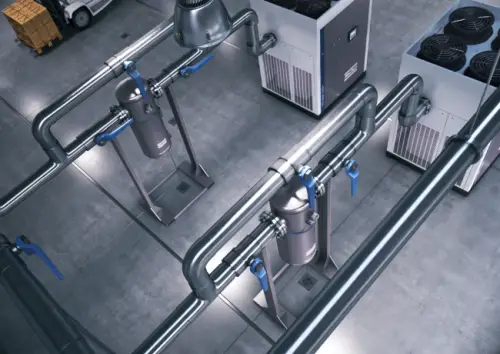-
Join SingaporeBikes.com today! Where Singapore Bikers Unite!
Thank you for visiting SingaporeBikes.com - the largest website in Singapore dedicated to all things related to motorcycles and biking in general.
Join us today as a member to enjoy all the features of the website for FREE such as:
- Latest Motorcycle News
- SGBikeMart / Classified Ads
- Forums
- Blogs
- Picture/Video Gallery
- Motorcycle Clubs
- Event Calendar
- and many more!
Registering is free and takes less than 30 seconds! Join us today to share information, discuss about your modifications, and ask questions about your bike in general.
Thank you for being a part of SingaporeBikes.com!
How Are Innovations in Compressed Air Treatment Boosting Energy Efficiency?
- 4,949.98 SGD For Rent/Lease (WTR)
-
Offered by:
mrfrmarket
- (
- )
- 11 months and 30 days left ()
-
Specs
- Item Condition New
- Quantity 1
-
Name
lissabella
Description
The Future of Compressed Air Treatment: Innovations Driving Efficiency
Compressed air is an essential utility in many industries, from manufacturing and automotive to pharmaceuticals and food processing. However, the production and treatment of compressed air often come with significant energy costs and environmental impacts. As industries strive for greater efficiency and sustainability, the future of compressed air treatment is being reshaped by innovative technologies and practices. Let’s explore the trends and advancements driving this transformation.
1. Advanced Filtration Technologies
One of the most critical aspects of compressed air treatment is filtration. Impurities like dust, oil, and moisture must be removed to maintain system performance and product quality. Recent innovations have led to the development of:
-
Nano-Fiber Filters: These advanced filters use ultra-fine fibers to capture even the smallest particles, providing superior filtration efficiency while reducing pressure drop, which in turn lowers energy consumption.
-
Self-Cleaning Filters: Equipped with automatic purging mechanisms, these filters minimize maintenance requirements and extend filter life.
By improving filtration technology, companies can reduce operational downtime, lower energy costs, and ensure consistent air quality.
2. Energy-Efficient Dryers
According to a Compressed Air Treatment Equipment Market report, the industry is expected to grow significantly in the coming years.
Moisture is a major concern in compressed air systems as it can cause corrosion, equipment damage, and product contamination. Traditional refrigerant and desiccant dryers are effective but often consume large amounts of energy. New advancements include:
-
Heatless Regenerative Desiccant Dryers: Utilizing minimal energy by optimizing purge air cycles, these dryers enhance efficiency.
-
Variable Speed Drive (VSD) Dryers: Adapting their operation based on demand, VSD dryers reduce energy consumption and minimize carbon footprint.
-
Membrane Dryers: Offering a compact, energy-efficient solution for moisture removal, these are particularly useful for smaller or remote operations.
3. Smart Monitoring and IoT Integration
The Industrial Internet of Things (IIoT) is revolutionizing compressed air systems by enabling real-time monitoring and data analysis. Modern air treatment solutions now incorporate smart sensors and cloud connectivity, allowing for:
-
Predictive Maintenance: Sensors detect early signs of equipment failure, allowing for timely interventions and reducing unplanned downtime.
-
Energy Optimization: Continuous data collection helps identify inefficiencies and suggests corrective actions.
-
Remote Management: Operators can monitor and adjust systems remotely, improving responsiveness and operational flexibility.
The integration of IIoT not only increases reliability but also helps organizations meet sustainability goals by optimizing energy use.
4. Enhanced Energy Recovery Systems
A significant amount of energy used to compress air is converted into heat. Traditionally, this heat was wasted, but modern systems are now leveraging energy recovery technologies to repurpose it. Innovations include:
-
Heat Exchangers: These devices capture heat generated during compression and repurpose it for space heating or water heating.
-
Integrated Heat Recovery Systems: Advanced systems can reclaim up to 90% of the energy used in air compression, drastically reducing energy costs.
By harnessing waste heat, industries can lower their overall energy consumption and carbon emissions.
5. Modular and Scalable Solutions
Flexibility is becoming a key consideration for compressed air treatment systems. With industries facing fluctuating demands, modular and scalable solutions offer a future-proof approach. Features include:
-
Plug-and-Play Modules: Easily expandable systems allow companies to adjust capacity without overhauling their infrastructure.
-
Hybrid Systems: Combining multiple technologies (e.g., refrigerant and membrane dryers) optimizes performance under varying operational conditions.
This adaptability ensures that compressed air systems remain efficient and cost-effective, regardless of changing production needs.
6. Sustainable and Eco-Friendly Solutions
Sustainability is a growing priority for industries worldwide. Manufacturers of compressed air treatment equipment are innovating to reduce environmental impact by:
-
Eco-Friendly Refrigerants: Transitioning to low-global warming potential (GWP) refrigerants minimizes the carbon footprint of air dryers.
-
Energy-Efficient Components: Utilizing advanced materials and designs to lower energy consumption.
-
Carbon-Neutral Solutions: Developing systems that offset emissions through renewable energy integration or carbon capture technologies.
These advancements not only support corporate sustainability initiatives but also help comply with increasingly stringent environmental regulations.
7. Artificial Intelligence and Machine Learning
Artificial intelligence (AI) and machine learning (ML) are playing an increasingly important role in optimizing compressed air treatment. AI-powered systems can:
-
Predict Usage Patterns: Analyzing historical data to anticipate demand fluctuations and adjust system output accordingly.
-
Optimize System Performance: Identifying inefficiencies and recommending real-time adjustments to minimize energy waste.
-
Enhance Fault Detection: Improving the accuracy of fault diagnosis, allowing for quicker and more effective maintenance.
By integrating AI and ML, companies can achieve unprecedented levels of efficiency and reliability.
Conclusion: Embracing the Future of Compressed Air Treatment
The future of compressed air treatment is undoubtedly exciting, with cutting-edge innovations driving efficiency, sustainability, and reliability. As industries embrace advanced filtration, energy-efficient dryers, IoT integration, energy recovery, modular solutions, and AI-powered optimization, the landscape of compressed air treatment will continue to evolve.
Organizations that invest in these technologies not only benefit from reduced operational costs and enhanced productivity but also contribute to a more sustainable future. By staying ahead of these trends, companies can ensure their compressed air systems are not just efficient but also resilient and adaptable in an ever-changing industrial world.
.png.f357c4bbda45b8d1f0301390a48a7ff4.png)





Recommended Questions
There are no questions to display.
Join the conversation
You can post now and register later. If you have an account, sign in now to post with your account.